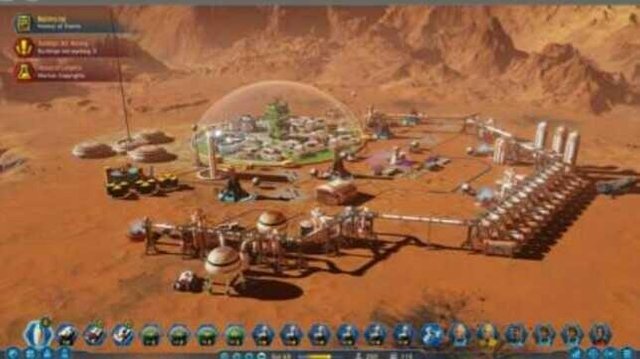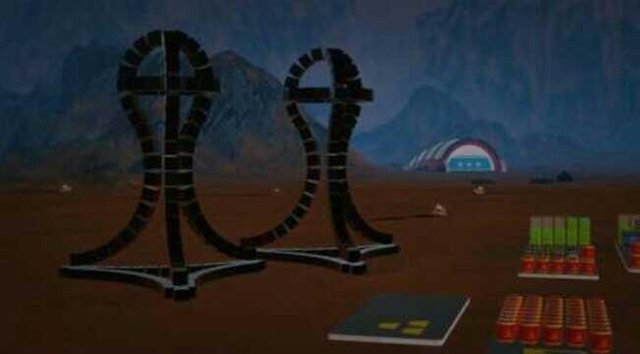It is said that the city simulator is best regarded as a series of stocks and currents. You have an important building that supplies resources, which are then distributed in a large style engraved by your design. Your success, then, depends on how artful and effective you are creating your solution. If that is the size at which we should judge the city simulator, there is nothing more beautiful or essentially or thematic distillation than on a Defensive Mars.
The room is hard, and Mars is no longer forgiving; Your goal is to order a mission that can withstand the punishment conditions of the Red Planet. You can take the government of an international consortium, a large private company, or some real-world space-powered space world. From there, you choose how to guide your Martian colony. As far as many simulators let level of role play, your time on Mars has something to do with what you are going to do. But your progress is constantly being evaluated by your sponsoring state or organization, offering some very loose targets like "getting a colonist" and "staying alive for a while." Beyond that, the direction is yours.

Your first forays on the planet are buzzing; RC rover and semi-autonomous bots are your important tool. They help you investigate the surface of Mars and make your basics run. You have a set of options for getting important resources - with each creating a slightly different relationship between your settlement and the planet. That's because everything here degrades. The ground is down by eternal dust storms, chastising the cold, and meteor raids, nothing is over and it all comes at a cost. Whether it's by extracting from rocks, or sucking what could be a bit of a lacking Martian atmosphere, even something as fundamental as how you get water affects countless other decisions.
Choose an extractor, and then you need to design your outpost around the fact that it will kick in much more corrosive dust into the air (in between half a dozen other considerations). Cousin extractor, vaporator, is a more environmentally friendly option ... but with low output costs, and requires a wide spacing between structures to be effective. The brilliance of Surviving Mars, then, forces you to think systemically. Every choice is a commitment, a statement of how you think best to run a human visit to a new frontier.
The surviving Mars gets a lot of mileage narration from this. As you progress, you always fight the excessive elements and forces of nature. Your structure is always demeaning, and any help is often months-which means you have a strong supply line for the materials you need, or you're ready to cope with long delays in Earth's repeat supply missions. Because your colony's development is connected with these choices, it also creates powerful narrations throughout, unlike those found in The Sims, for example.
Those decisions may seem like making a trap underneath the line, but the other genius step that Surviving survives is how permissive it is. Instead of locking you into a given style of play, the emphasis is on the consequences and teach you how to manage it. Your colony, at its most basic level, is governed by a series of rules. If you own building X, you often need a Y resource to defend it, and that resource comes from building Z, and so on.
The brilliance here is that all of these systems work and are responsive to how you play. Every choice is important, but nothing determines your destiny. Even if you can not get what you need from the Martian mine first, you can order it from Earth. Each option also has consequences. And that means that at some point, you fail to meet a condition and the system starts to fall apart, or you continue to survive and survive.

What helps here is that the Surviving Mars may be subtle, but this is not punishing. Of course, the in-game consequences of failure are ... a bit extreme (like seeing your colony suffocate, if you fail to keep the oxygen flowing). But you will often have plenty of time to fix it, and a series of warnings that encourage you to change direction. How you do it, again, down to which consequences you want to live, and how long you can continue to pay those costs - at least, at the most basic level. Sometimes, Surviving Mars may be under-emphasizing some important parts - that is how important supply chain management is - but it's fun and elegant, with you just needing enough management and planning to keep your role interesting. As you progress, the drones can pick up more, so you can handle large scale plans for completion.
It enables you to graduate to manage the life of the invaders, your relationships with Earth, your various supply chains, and new and additional expansions on your colony (which follow their own systems and set of rules). What makes all of this work is precisely that it's very complex, giving generally good feedback about how well your options work, and giving you an even greater purpose to beat. It's a powerful set of basic ideas that keep the game consistently engaged, and allows you to open new fronts and tackle new challenges - like getting another close together - as you build confidence to work through it.
Surviving Mars is SimCity with soul.
A more traditional and optional narrative is also available. Every time you play, you will eventually find some kind of mystery, be a colonist with strange sightings, annoying black rocks, or legitimate aliens. This will push your colony in a more specific direction, if you decide that it is something you want to explore. Often, this mystery requires you to do something specific, like building a special building to start a series of narrative sketches. While the core game of "defending and defending against all odds on the surface of Mars" should be a big enough hook for many players, it's great to have an optional story that discusses the mythology of the planet throughout our real-world history and pop culture.
And that's just that. Mars is more than a planet - this is the next big goal for a healthy portion of people on Earth. Surviving Mars nods that by pursuing real-world influences and designs, plus a lot of technology that makes sense because it can pack it. Although this game definitely requires some freedom, most of the structures, ships, and technology will be familiar to aerospace fans. The base supplies and passenger ships, for example, are modeled after the upcoming BFR ship SpaceX.
Surviving Mars, above all else, is about hope. So many game strategies survive on their gameplay, avoiding the theme or the whole message. But, as smart as it sounds, for those who believe in the majesty of outer space, for those who want to admire how destructive our little species are spooky, the Surviving Mars is SimCity with the soul. This shows the challenges that accompany planetary migration, but also shows that they can be solved. With proper planning, driving, and ingenuity, we can do great things together.